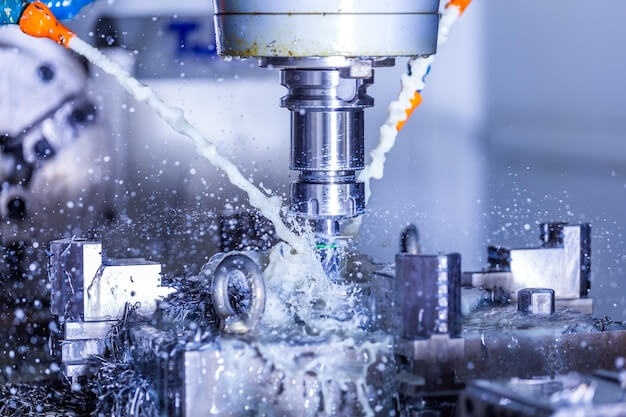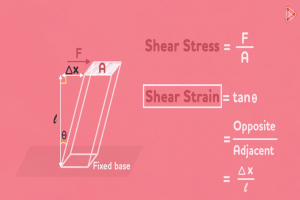Introduction to CNC Routing
CNC routing technology revolutionized manufacturing by leveraging computer numerical control to cut, carve, and engrave materials with exquisite precision. The routing process begins with a detailed design created in specialized software, which is then translated into commands for the CNC machine. The router, being the critical component of this setup, spins at high speeds and follows the programmed path to shape the workpiece according to specifications. Additional components such as the bed, clamps, or vacuum hold-downs assist in securing materials during operation, ensuring accuracy and efficiency. This system offers unparalleled control in woodworking, metalworking, and plastic fabrication industries, removing human error from complex cutting tasks.
Porosity: The Process of CNC Routing
CNC routing is a sophisticated manufacturing process that involves the use of computer-controlled cutting tools to remove material from a workpiece, thereby shaping it according to precise specifications. This process is particularly relevant in contexts where porosity, or the presence of voids and air bubbles within materials, can significantly impact the quality and functionality of the final product. Below, we explore the relationship between porosity and CNC routing, including how porosity can affect CNC routing outcomes and strategies to mitigate its impact.
Understanding Porosity in CNC Routing
Porosity refers to the presence of small voids or air bubbles within the material of a part. In the context of CNC routing, porosity can manifest due to various factors, including the inherent characteristics of the material being routed and the specific conditions of the routing process.
Effects of Porosity on CNC Routing:
- Structural Integrity: Porosity can compromise the mechanical properties of the material, making it less durable and more prone to failure under stress.
- Aesthetic Quality: Surface imperfections resulting from porosity can detract from the visual appeal of the routed part.
- Functional Performance: Porosity can lead to inconsistencies in the material, potentially affecting the part’s functionality, especially in precision applications.
Strategies for Mitigating Porosity in CNC Routing
Mitigating the effects of porosity in CNC routing involves a combination of careful material selection, process optimization, and post-processing techniques. Below are some strategies to consider:
- Material Selection:
- Choose materials with low inherent porosity for applications where structural integrity and aesthetic quality are critical.
- Consider the use of composite materials or specially treated materials designed to minimize porosity.
- Process Optimization:
- Optimize routing parameters (e.g., cutting speed, feed rate) to reduce the likelihood of introducing porosity during the routing process.
- Implement proper tooling options, such as using sharp, high-quality cutting tools that can minimize material stress and reduce the risk of creating voids.
- Post-Processing Techniques:
- Employ post-processing methods such as filling and sealing to address any porosity that may have occurred during routing.
- Conduct rigorous post-routing inspections to identify and rectify porosity issues before the part is finalized.
Advantages of CNC Routing
The precision and accuracy of CNC routing are unparalleled when compared to manual machining techniques, as every cut follows meticulously programmed paths with exact specifications. This exactitude is particularly crucial for complex designs and intricate details that require a high degree of consistency, which is effortlessly maintained during mass production runs. The versatility of the CNC router also stands out; it can work on various materials ranging from wood and plastics to metals and foams, enabling a wide array of applications. Efficiency-wise, CNC routers operate at remarkable speeds, translating into faster turnaround times while simultaneously reducing labor hours and costs. Lastly, its ability to minimize material waste through precise cutting ensures cost-effectiveness and supports sustainable manufacturing practices.
Understanding Porosity and Its Impact on CNC Routing Applications
Porosity, characterized by the presence of voids or air bubbles within a material, can significantly influence the quality and functionality of parts produced through CNC routing. This phenomenon is particularly relevant in applications where the structural integrity and aesthetic appeal of the final product are paramount.
Impact of Porosity on CNC Routing Applications
- Structural Integrity: Porosity can weaken the material, making it less durable and more prone to failure under stress. This is critical in applications requiring high strength and reliability.
- Aesthetic Quality: Surface imperfections resulting from porosity can negatively affect the visual appeal of the part, which is crucial in consumer-facing products.
- Functional Performance: In applications where precision and performance are key, porosity can lead to inconsistencies, affecting the part’s functionality.
Mitigating Porosity in CNC Routing
To ensure high-quality outcomes in CNC routing applications, addressing porosity is essential. Strategies include:
- Optimizing Mold Venting: Enhancing mold design to allow air to escape more efficiently during the casting process.
- Adjusting Casting Resin Viscosity: Fine-tuning the viscosity of casting resins to reduce the likelihood of air entrapment.
- Implementing Rigorous Post-Casting Inspections: Conducting thorough inspections to identify and rectify porosity issues before proceeding with CNC routing.
Applications of CNC Routing
CNC routing, a process utilizing computer-controlled cutting tools to remove material from a workpiece, finds applications across various industries. Here are some key areas:
- Woodworking: Creating intricate designs and cuts for furniture, cabinetry, and decorative items.
- Metalworking: Fabricating precise metal components for machinery, automotive parts, and custom projects.
- Plastic Fabrication: Producing detailed and complex shapes for prototypes, consumer products, and industrial components.
- Sign Making: Crafting detailed and durable signs for businesses, public spaces, and events.
Other Articles You Might Enjoy
- Applications and Advantages of Bronze CNC Machining
1. Introduction: The Enduring Allure of Bronze in CNC Machining In this opening section, we explore the timeless appeal of bronze as a material for CNC machining. From its rich…
- What is 3D Printing? An Exploration of Its Process, Advantages, and Applications
Introduction to 3D Printing 3D printing stands as a transformative approach to manufacturing, allowing for the creation of complex shapes and structures through an additive process where material is laid…
- Robotics Automation: Process, Advantages, and Applications in Modern Industry
Introduction to Robotics Automation Robotics automation represents the deployment of automated robots and technologies designed to perform tasks that historically required human intervention, marking an essential progression in modern industry.…






